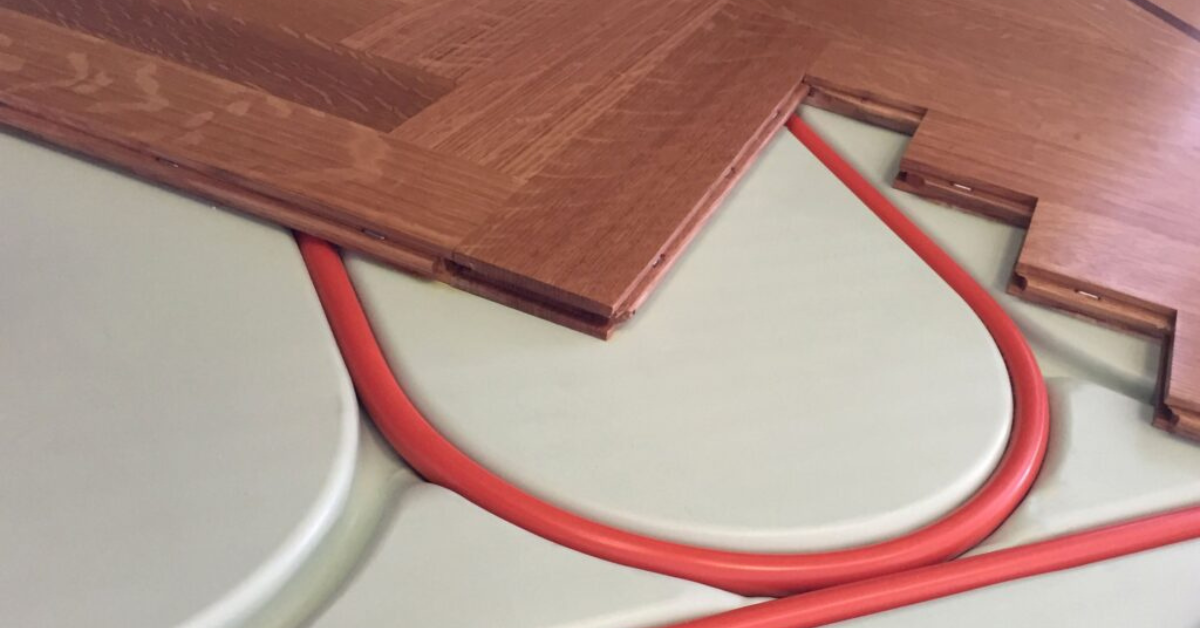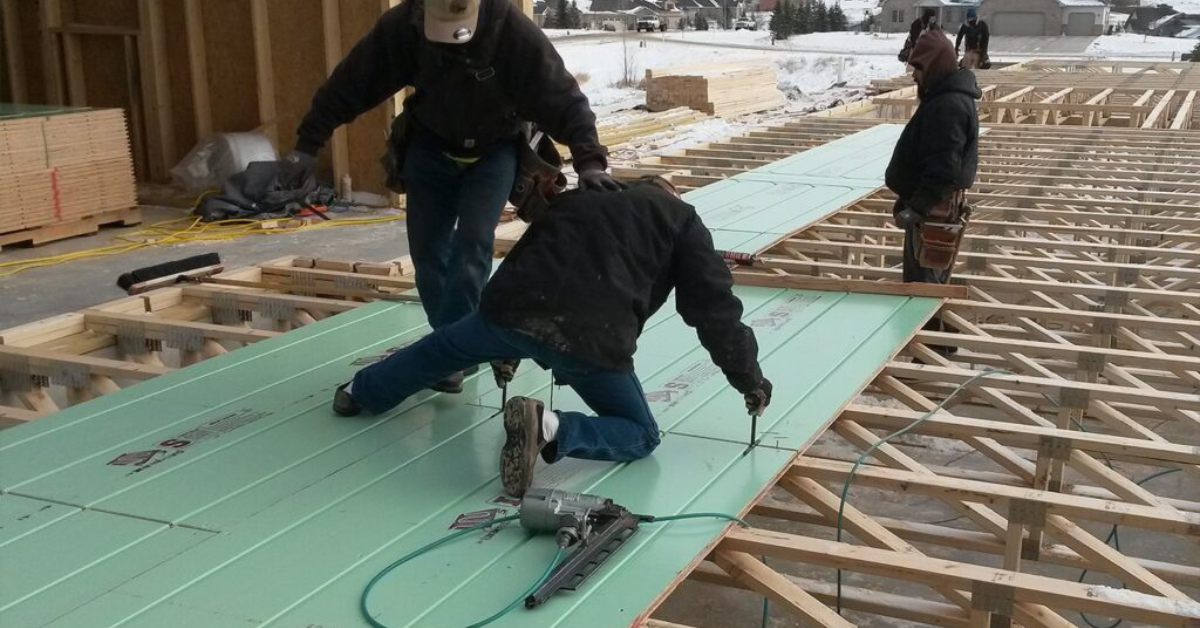One of the most effective ways to heat a home is using radiant floor heating, and there’s a rich history going back thousands of years backed with proven science. Today, radiant heating systems have taken a much more modern approach. Homeowners who are building a new home or remodeling an existing one can reap the many benefits radiant heat can provide.
In this post, we’ll review how radiant heat works, what you should know about these future-proof home heating systems, and discuss different types of radiant heat. For more information on how you can make radiant heat an upgrade in your home, contact us directly at Warmboard.
![]()
A Review of Forced Air Heating
In a typical home using forced air heating, a standard furnace uses gas to create heat. The hot, and often, dirty air is then distributed throughout the home via ducts, vents and fans. But as most homeowners are keenly aware, there are many downsides to this approach.
In a single story home, the heat is distributed universally, regardless of the heating needs in different parts of the house- some rooms are warm while others are too hot or too cold. If you have beautiful vaulted ceilings, the heat will rise to the highest point in a room, wasting energy, while you are forced to add layers of clothing just to try and maintain a reasonable level of comfort. In a two story home, things can get even more uncomfortable, the upstairs becomes too hot while the downstairs remains too cold. Loud fans kick on and off all day and night, often preventing a good night’s sleep.
These systems are inefficient and more expensive to operate than a home with radiant.
How Does Radiant Heating Work?
Let’s set the scene. It’s a frigid morning and you’re lying awake in a warm bed. You dread getting up in anticipation of your bare feet touching the cold floors of your home. Imagine, instead, that those same floors felt as warm as your down comforter. So how does radiant floor heating make this happen?
There are two types of radiant floor heating. The first is an electric mat which is most commonly found in small areas like kitchens and bathrooms. The other method is hydronic, in which tubing is installed beneath the floor, and carries hot water to rooms in the house. As the water, or electric coils, heat up, the heat is transferred to surrounding surfaces, and emitted into the home. But each method has different benefits and uses.
Radiant Heat: Electric vs Hydronic Systems
Electric radiant heat is very common. It uses resistance wire, which is razor-thin and sits just beneath a finish floor. This electric radiant heat system is connected to a thermostat and uses electricity to heat up the wire. There are no boilers or pipes required for this system. Electric radiant is overwhelmingly used in small areas, such as a bathroom. Electric radiant can be extremely expensive to operate depending on local electricity rates. Additionally, while electricity will make the floor feel warm, homeowners will still require an additional heating system to heat the rest of the home adequately.
Alternatively, hydronic radiant heat systems use water to radiate heat throughout your home. Historically, copper pipes were embedded in concrete. But this method was very slow to respond to changing heating needs. Today however, many radiant heat experts use resilient PEX tubing in combination with a thinner assembly beneath your floor, generally a wood panel (sometimes coated with aluminum) to hold the tubing in place. Panels utilizing conductive aluminum can heat the home rapidly, distributing heat to every corner of the home. The better the conductivity, the faster the response, the lower your energy bills, and the more comfortable your home will be.
Hydronic radiant systems are generally used in much larger areas, an entire home or addition. Due to the efficiency of the system, hydronic radiant is cheaper to operate and can provide heat to the entire home without the need for a secondary heating system. Hydronic radiant floor heating systems also integrated “zoning”, which is the ability to set unique temperatures for every room in the house, ensuring comfort is optimized for every occupant. This means you can also turn down certain areas of your home when they aren’t being used, further increasing efficiency. This is not something that can be easily done with forced air heating.
In Summary: Radiant Heat Works
Overwhelmingly, homeowners choose radiant floor heating for comfort. If your home isn’t being heated by radiant heat, you’re missing out on the luxurious experience of walking through perfectly heated rooms at all times — not to mention the potential for hundreds of dollars in energy savings every year.
When you’re ready to upgrade your home’s heating equipment, Warmboard is waiting with the best radiant heating systems on the market today backed by strong warranties and broad market acceptance. Warmboard rises above all other radiant options to provide faster and more simple installations, greater performance and energy efficiency, and incredible comfort through our industry-leading panels and controls in our Warmboard Comfort System.
To learn more or request a quote, contact us today.
Related blog posts:

